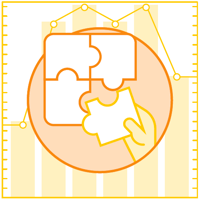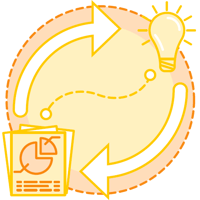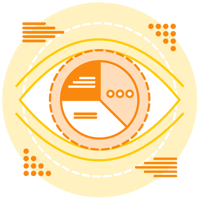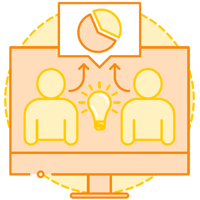When making a major decision, would you go with your gut, or would you consult the facts and data first? Gartner research revealed that businesses in Asia-Pacific, though mature than other regions, still make decisions with their gut, as 52% don’t rely on data to make transformational, accurate - and measurable - decisions.
Rather than relying on opinion, hunch or gut, by using the right data tools and platforms, businesses can spot reoccurring trends or anticipate peak periods, allowing them to adjust their operations to accommodate. Ultimately, if businesses aren’t already peering into their data, they can bet that their competitors are – and the faster they sow seeds of a data culture today, the better they can ensure competency in the near-future.
SET THE GOALS FOR YOUR DATA
 To start off, businesses should work out the business questions they want their data to answer. Doing so doesn’t just narrow the search for the right data – it also allows leaders to attach measurable goals and objectives to these questions, and subsequently track progress as the data comes in. This in turn, sets a precedent for all decision-making: one that sees all decisions closely aligned to the data and the objectives of the business question.
To start off, businesses should work out the business questions they want their data to answer. Doing so doesn’t just narrow the search for the right data – it also allows leaders to attach measurable goals and objectives to these questions, and subsequently track progress as the data comes in. This in turn, sets a precedent for all decision-making: one that sees all decisions closely aligned to the data and the objectives of the business question.
Businesses should also keep in mind that the amount of data that’s needed varies with the problem’s complexity. For instance, less data is needed to resolve a single bottleneck in a supply chain, compared to what’s needed to optimise the entire chain itself. When starting out, businesses should attempt to tackle bite-sized questions first, before graduating onward to the bigger, more data-intensive questions.
DEMOCRATISE YOUR DATA

If people can’t access your data, they simply won’t use it. Those serious about enabling data-led decisions should therefore make frictionless data accessibility their top priority – and this is something that cloud-based business management solution platforms, such as ERP systems, can help do.
Most platforms are intuitive enough to the average user, allowing employees to easily find and draw out the data they need, and use them to substantiate their decisions. Furthermore, they – and the entire business – can see the effects of those decisions in real-time, thanks to ERP’s nature as a single source of truth, further boosting collaboration and accountability across the board.
PAVE THE WAY AHEAD WITH DATA

In the long run, data can also contribute toward more accurate predictions, as opposed to emotion-based gut feel. Data’s rigorous certainty is inspiring anyone from e-commerce giants to small-medium businesses to weave it into their decision-making processes. Most would turn to ERP platforms to output data snapshots across periods of time, and present them in highly visual charts or graphs that allows employees to identify recurring trends or spikes in demand.
This enables teams to plan ahead, and greet these busy periods with less stress and pressure – further reinforcing the usefulness of data to the business. And as their data culture matures, businesses can work with their solutions provider to incorporate more advanced data – such as industry sales or customer trends data – to further boost the accuracy of their predictions.
WEAVE PERSONALITY TO YOUR DATA

There is also a need for businesses to think about how their people interact with their data. Data has obtained a ‘dry and boring’ reputation in the past, primarily due to how it’s presented: in plain presentation decks or within stacks of reports. On the other hand, today’s ERP and storage platforms present data in a highly visualised, intuitive and non-threatening manner. And the cloud-based nature of these platforms allows data to be mobile and accessible anywhere, giving leaders and employees the chance to weave data into their everyday lives.
Data discussions could take place over cups of coffee, or during weekly team catchups – the possibilities of personalising data are endless.
ALLOW INTUITION AND DATA TO MEET

There will also be times when emotional ‘gut-feel’ should take the lead. Data can do much, but it cannot tell you how to deal with frustrated suppliers or emotional customers. Also, when it comes to using data to forecast trends and decisions, this will be more accurate than a gut feel, but sadly does not yet have the power to predict the future with certainty.
There will always be a place for human intuition and snap judgements, and as businesses grow, they will eventually work out how best to blend the best of both worlds. But in every other major business decision, data should take the lead, if the business desire is to execute decisions that lead to outcomes that are provable, measurable and scalable in the long-term.

